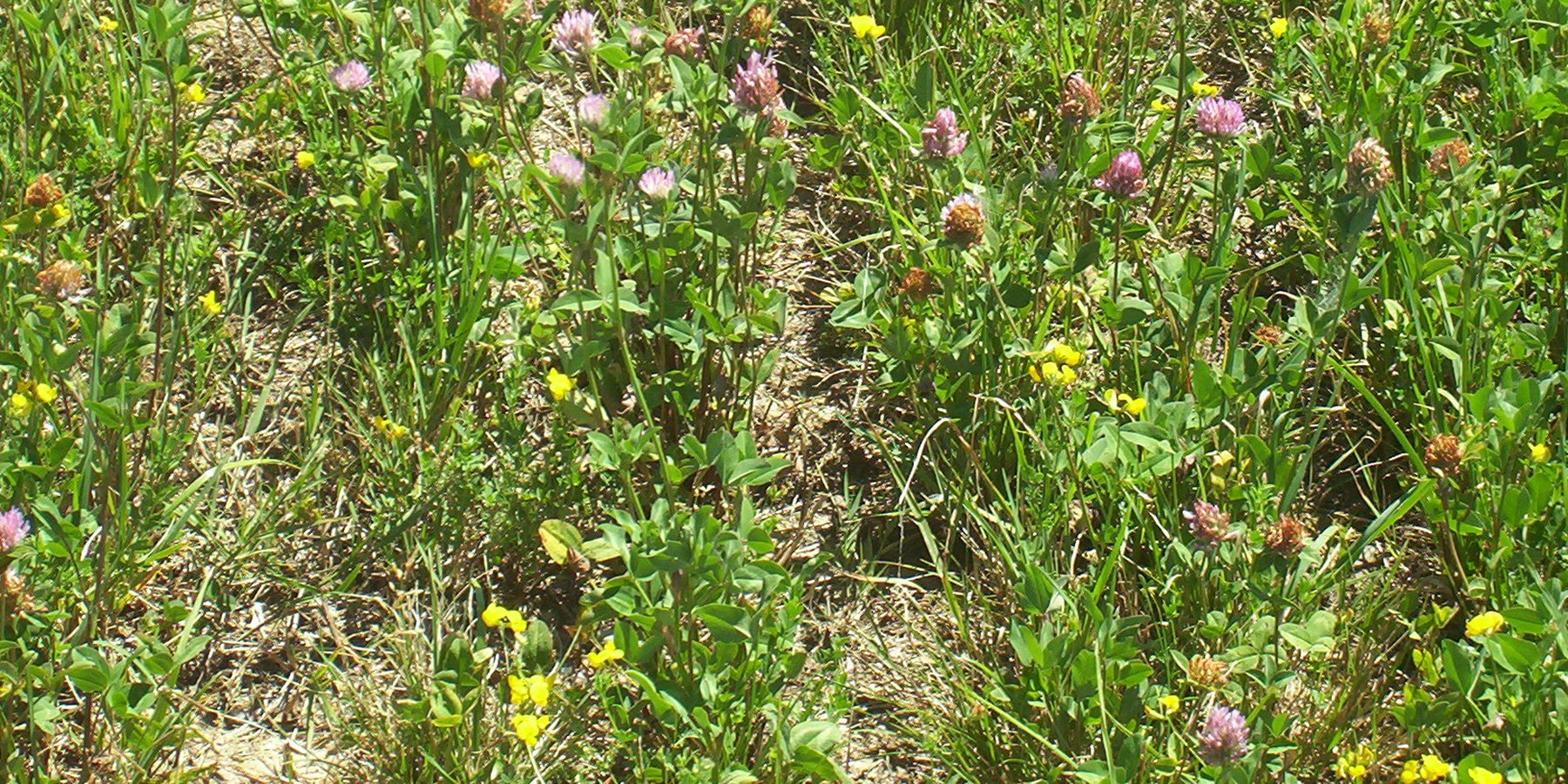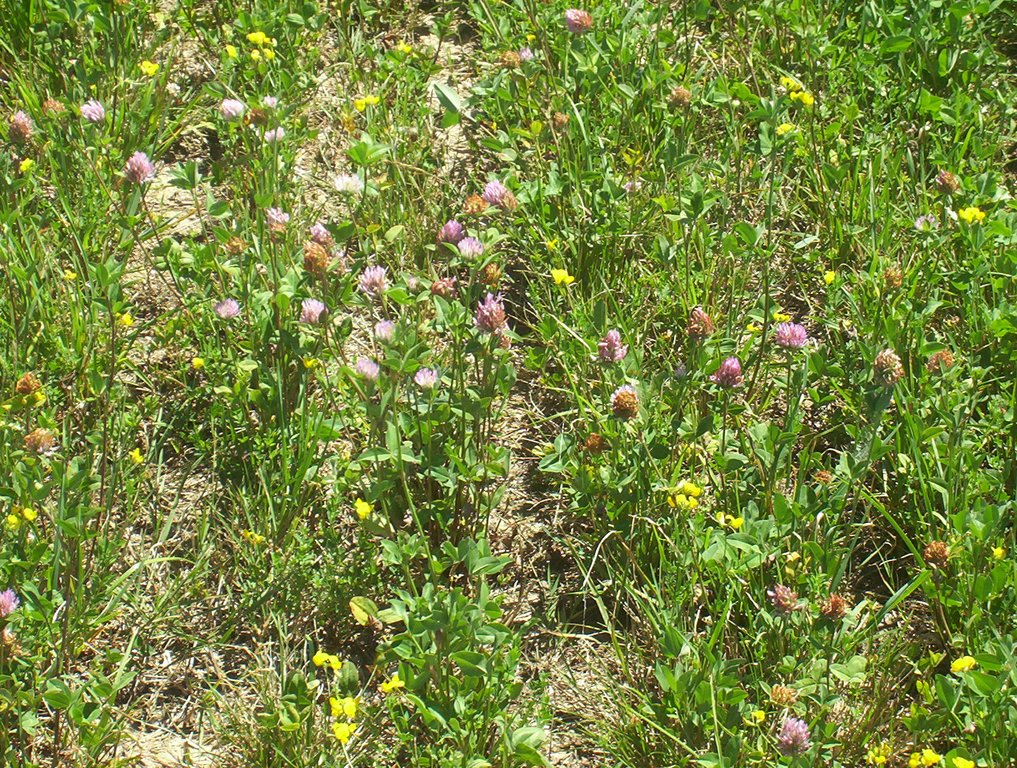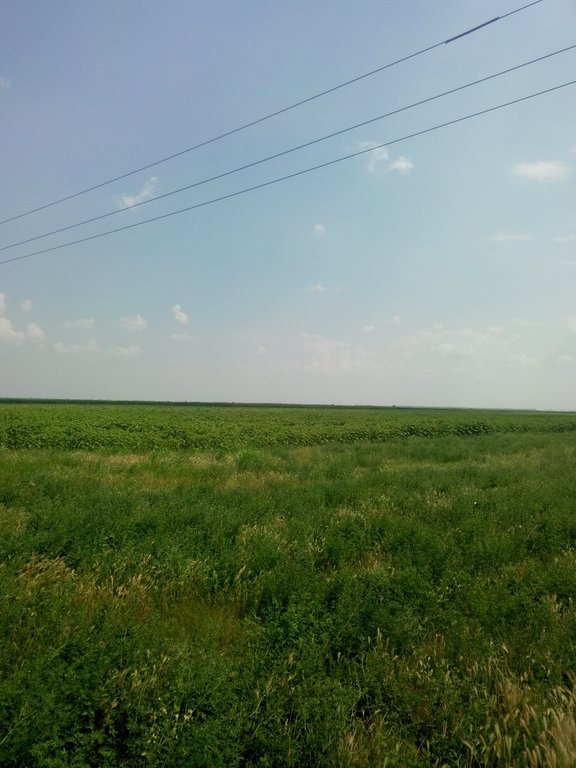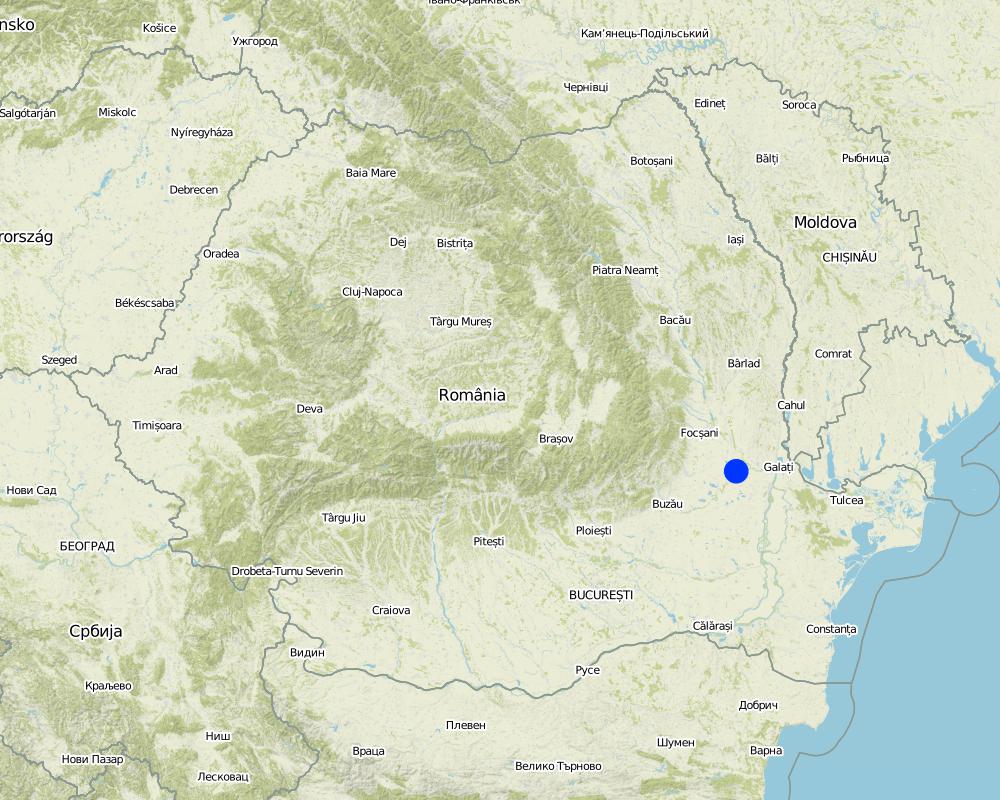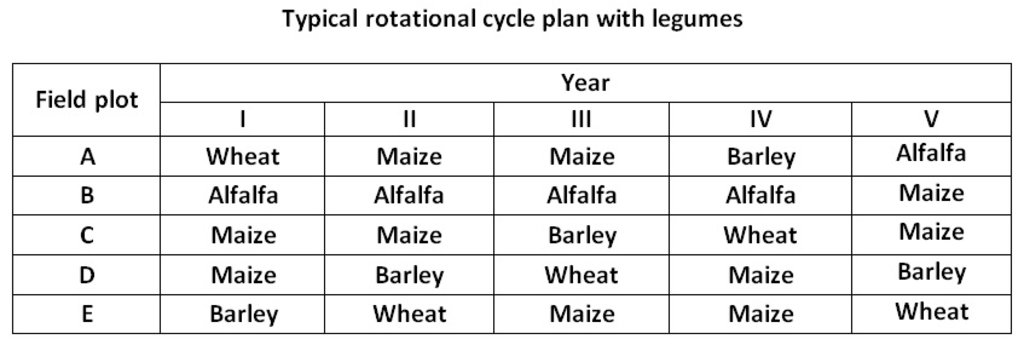Leguminous crop cultivated in plot temporarely set outside the crop rotation [罗马尼亚]
- 创建:
- 更新:
- 编制者: Olga Vizitiu
- 编辑者: –
- 审查者: Ursula Gaemperli, Gudrun Schwilch, Nina Lauterburg, Alexandra Gavilano
technologies_2963 - 罗马尼亚
查看章节
全部展开 全部收起1. 一般信息
1.2 参与该技术评估和文件编制的资源人员和机构的联系方式
有助于对技术进行记录/评估的项目名称(如相关)
Interactive Soil Quality assessment in Europe and China for Agricultural productivity and Environmental Resilience (EU-iSQAPER)有助于对技术进行记录/评估的机构名称(如相关)
National Research and Development Institute for So (National Research and Development Institute for So) - 罗马尼亚1.3 关于使用通过WOCAT记录的数据的条件
编制者和关键资源人员接受有关使用通过WOCAT记录数据的条件。:
是
1.4 所述技术的可持续性声明
这里所描述的技术在土地退化方面是否存在问题,导致无法被认为是一种可持续的土地管理技术?:
否
2. SLM技术的说明
2.1 技术简介
技术定义:
Introducing the leguminous crops in crop rotation to improve soil fertility, as field plot set temporarely outside the crop rotation. Crop rotation with legumes is an alternative to rotation containing only cereals.
2.2 技术的详细说明
说明:
The technology is applied in Braila region and is located in north-eastern part of Romanian Plain. It has an agricultural area of 387,646 ha (of which 350,001 ha are arable land), and has specific geomorphologic, hydrological and climatic conditions which need to use ameliorative agricultural systems. Within Braila County are distinguished the following relief units: Calmatui Plain, part of the Braila Plain (51% from County area) and the Floodplains of Danube (Big Island of Braila), Siret, Buzau and Calmatui rivers (49% from County area).
Braila Plain is characterized by a specific micro-relief of Baragan type with large floodplains, poorly fragmented, with altitudes ranging between 20-25 m in the east part and 35-40 m to the west part, with soils mainly of chernozem type, formed on loess and loess deposits and which shows numerous small depression areas. Floodplains, areas adjacent to Danube, Siret, Buzau and Calmatui rivers are located at lower altitudes, ranging between 2-4 m and 13-15 m and are characterized by the presence of alluvial soils formed on river-limnic and alluvial deposits, with alternating of layers with different textures. According to United Nations Convention to Combat Desertification, Braila County is located in arid region with an average annual temperature of 10.9°C, long-term average annual precipitations (P) of 447 mm, potential evapotranspiration (ETP) of 705 mm (750-800 mm in dry years) and an average climatic water deficit of 258 mm (350-400 mm in dry years). The biophysical aridity index (P/ETP = 0.50-0.65) places the Braila region in area with moderate risk to desertification. Both intensive and extensive farming systems are practiced within Braila County. Intensive agriculture, characterized by high inputs and yield levels, is realized on large vegetal farms. On the other hand, extensive agriculture, with low input and yield levels, is practiced by farmers on small vegetal farms, and is so-called the semi-subsistent agriculture.
Crop rotation with legumes (such as alfalfa) is is generally limited to a maximum period of time of 5 to 6 years, providing a plant succesion of spring (generally maize, soybean, sunflower) and winter crops (such as wheat, rapeseed, barley). The technology consists of a crop rotation in which one parcel/field plot is cultivated with perennials legumes and set temporarily outside the crop rotation for 4-5 years. During this period, the field plot cultivated with perennials legumes recovers its fertility by improving the soil aeration status, water infiltration and storage rate and soil aggregate stability. Leguminous crops play an important role in crop rotation because it favors the fixation of atmospheric nitrogen and bind it into the soil with a significant increase in soil fertility. Crop rotation with legumes reduces the biocides use because it breaks the pest cycles and weeds. Leguminous crops also improve the soil structure and its stability, increases water permeability, soil biodiversity and soil quality. At the same time, crop rotation with legumes represents a supplemental income source for land users. After alfalfa baling, this is sold to the nearby livestock breeders.
Crop rotation with legumes has many advantages, such as increase of soil agro-ecosystem biodiversity, reduction of chemical inputs, reduction of soil structure degradation processes, increase of nutrient availability and consequently increase of soil fertility, and increase of farm income. Also in the land user's view, crop rotation with legumes may improve land productivity, even though it increase the costs of inputs and management for crop establishment, and for this reason the land user's awareness is low.
2.3 技术照片
2.5 已应用该技术的、本评估所涵盖的国家/地区/地点
国家:
罗马尼亚
区域/州/省:
Braila
有关地点的进一步说明:
Braila
具体说明该技术的分布:
- 均匀地分布在一个区域
如果不知道精确的区域,请注明大致覆盖的区域:
- < 0.1 平方千米(10 公顷)
注释:
Documentation of the technology is based on examination of field plot smaller than 0.1 km2.
Map
×2.6 实施日期
如果不知道确切的年份,请说明大概的日期:
- 不到10年前(最近)
2.7 技术介绍
详细说明该技术是如何引入的:
- 通过土地使用者的创新
3. SLM技术的分类
3.1 该技术的主要目的
- 改良生产
- 减少、预防、恢复土地退化
3.2 应用该技术的当前土地利用类型

农田
- 一年一作
年作 - 具体指明作物:
- 谷类 - 大麦
- 谷物类 - 玉米
- 饲料作物 - 苜蓿
每年的生长季节数:
- 1
注释:
crop rotation of 5-6 years, with one field plot set temporarely outside the crop rotation cultivated with perennial legumes (alfalfa)
3.4 供水
该技术所应用土地的供水:
- 雨养
3.5 该技术所属的SLM组
- 轮作制度(轮作、休耕、轮垦)
- 土壤肥力综合管理
3.6 包含该技术的可持续土地管理措施

农艺措施
- A2:有机质/土壤肥力
注释:
Introducing of a perennial crop (alfalfa) in a crop rotation with cereals
3.7 该技术强调的主要土地退化类型

化学性土壤退化
- Cn:肥力下降和有机质含量下降(非侵蚀所致)

物理性土壤退化
- Pu:由于其他活动而导致生物生产功能的丧失
3.8 防止、减少或恢复土地退化
具体数量名该技术与土地退化有关的目标:
- 减少土地退化
4. 技术规范、实施活动、投入和成本
4.1 该技术的技术图纸
技术规范(与技术图纸相关):
The technology consists of a crop rotation in which one parcel/field plot is cultivated with perennial crop (alfalfa) and set temporarily outside the crop rotation for 4-5 years. During this period, the field plot cultivated with perennial crop recovers its fertility by improving the soil aeration status, water infiltration and storage rate and soil aggregate stability.
After completing one rotational cycling plan, the field plot cultivated with perennial crop will be set in another plot from the crop rotation, until all the plots of the rotation plan will be cultivated with perennial crop.
作者:
National Research and Development Institute for Soil Science, Agrochemistry and Environment (ICPA) - Romania
4.2 有关投入和成本计算的一般信息
具体说明成本和投入是如何计算的:
- 每个技术区域
注明尺寸和面积单位:
1 ha
具体说明成本计算所用货币:
- 美元
如相关,注明美元与当地货币的汇率(例如1美元=79.9巴西雷亚尔):1美元=:
4.12
注明雇用劳工的每日平均工资成本:
17.60 USD
4.3 技术建立活动
| 活动 | 时间(季度) | |
|---|---|---|
| 1. | fertilisation | after harvest of previous crop |
| 2. | ploughing | after harvest of previous crop |
| 3. | seedbed preparation | after ploughing |
| 4. | alfalfa sowing | autumn |
| 5. | fertilisation | spring |
| 6. | chemical weeds control | spring - summer |
| 7. | pest control | spring - summer |
| 8. | alfalfa cutting | summer |
| 9. | alfalfa baling | summer |
4.4 技术建立所需要的费用和投入
| 对投入进行具体说明 | 单位 | 数量 | 单位成本 | 每项投入的总成本 | 土地使用者承担的成本% | |
|---|---|---|---|---|---|---|
| 劳动力 | labor | person-days | 3.0 | 17.6 | 52.8 | 100.0 |
| 设备 | fertilisation | machine-hours | 1.0 | 13.37 | 13.37 | 100.0 |
| 设备 | ploughing | machine-hours | 3.0 | 12.39 | 37.17 | 100.0 |
| 设备 | seedbed preparation | machine-hours | 2.0 | 19.67 | 39.34 | 100.0 |
| 设备 | alfalfa sowing | machine-hours | 1.0 | 17.32 | 17.32 | 100.0 |
| 设备 | fertilisation | machine-hours | 1.0 | 13.37 | 13.37 | 100.0 |
| 设备 | herbicides & pests control | machine-hours | 2.0 | 8.4 | 16.8 | 100.0 |
| 设备 | alfalfa cutting | machine-hours | 1.0 | 50.96 | 50.96 | 100.0 |
| 设备 | alfalfa baling | machine-hours | 2.0 | 36.4 | 72.8 | 100.0 |
| 植物材料 | alfalfa seeds | kg/ha | 22.0 | 6.12 | 134.64 | 100.0 |
| 肥料和杀菌剂 | complex fertilizers | kg/ha | 150.0 | 0.28 | 42.0 | 100.0 |
| 肥料和杀菌剂 | ammonium nitrate | kg/ha | 200.0 | 0.14 | 28.0 | 100.0 |
| 肥料和杀菌剂 | herbicides | l/ha | 0.5 | 13.75 | 6.88 | 100.0 |
| 肥料和杀菌剂 | biocides | l/ha | 0.1 | 110.55 | 11.05 | 100.0 |
| 技术建立所需总成本 | 536.5 | |||||
| 技术建立总成本,美元 | 130.22 | |||||
4.5 维护/经常性活动
| 活动 | 时间/频率 | |
|---|---|---|
| 1. | fertilisation | spring |
| 2. | herbicides & pests control | spring - summer |
| 3. | alfalfa cutting | summer |
| 4. | alfalfa baling | summer |
4.6 维护/经常性活动所需要的费用和投入(每年)
| 对投入进行具体说明 | 单位 | 数量 | 单位成本 | 每项投入的总成本 | 土地使用者承担的成本% | |
|---|---|---|---|---|---|---|
| 劳动力 | labor | person-days | 1.0 | 17.6 | 17.6 | 100.0 |
| 设备 | fertilisation | machine-hours | 1.0 | 13.37 | 13.37 | 100.0 |
| 设备 | herbicides & pests control | machine-hours | 2.0 | 8.4 | 16.8 | 100.0 |
| 设备 | alfalfa cutting | machine-hours | 1.0 | 50.96 | 50.96 | 100.0 |
| 设备 | alfalfa baling | machine-hours | 2.0 | 36.4 | 72.8 | 100.0 |
| 肥料和杀菌剂 | ammonium nitrate | kg/ha | 200.0 | 0.14 | 28.0 | 100.0 |
| 肥料和杀菌剂 | herbicides | l/ha | 0.5 | 13.75 | 6.88 | 100.0 |
| 肥料和杀菌剂 | biocides | l/ha | 0.1 | 110.55 | 11.05 | 100.0 |
| 技术维护所需总成本 | 217.46 | |||||
| 技术维护总成本,美元 | 52.78 | |||||
4.7 影响成本的最重要因素
描述影响成本的最决定性因素:
Certified seed material and costs with alfalfa cutting and baling are the most determining factors affecting the costs.
5. 自然和人文环境
5.1 气候
年降雨量
- < 250毫米
- 251-500毫米
- 501-750毫米
- 751-1,000毫米
- 1,001-1,500毫米
- 1,501-2,000毫米
- 2,001-3,000毫米
- 3,001-4,000毫米
- > 4,000毫米
指定年平均降雨量(若已知),单位为mm:
447.00
农业气候带
- 半干旱
5.2 地形
平均坡度:
- 水平(0-2%)
- 缓降(3-5%)
- 平缓(6-10%)
- 滚坡(11-15%)
- 崎岖(16-30%)
- 陡峭(31-60%)
- 非常陡峭(>60%)
地形:
- 高原/平原
- 山脊
- 山坡
- 山地斜坡
- 麓坡
- 谷底
垂直分布带:
- 0-100 m a.s.l.
- 101-500 m a.s.l.
- 501-1,000 m a.s.l.
- 1,001-1,500 m a.s.l.
- 1,501-2,000 m a.s.l.
- 2,001-2,500 m a.s.l.
- 2,501-3,000 m a.s.l.
- 3,001-4,000 m a.s.l.
- > 4,000 m a.s.l.
说明该技术是否专门应用于:
- 不相关
5.3 土壤
平均土层深度:
- 非常浅(0-20厘米)
- 浅(21-50厘米)
- 中等深度(51-80厘米)
- 深(81-120厘米)
- 非常深(> 120厘米)
土壤质地(表土):
- 中粒(壤土、粉土)
土壤质地(地表以下> 20厘米):
- 中粒(壤土、粉土)
表土有机质:
- 中(1-3%)
5.4 水资源可用性和质量
地下水位表:
5-50米
地表水的可用性:
中等
水的盐度有问题吗?:
否
该区域正在发生洪水吗?:
否
5.5 生物多样性
物种多样性:
- 中等
栖息地多样性:
- 中等
5.6 应用该技术的土地使用者的特征
定栖或游牧:
- 定栖的
生产系统的市场定位:
- 混合(生计/商业)
非农收入:
- 低于全部收入的10%
相对财富水平:
- 贫瘠
个人或集体:
- 个人/家庭
机械化水平:
- 机械化/电动
性别:
- 男人
土地使用者的年龄:
- 中年人
说明土地使用者的其他有关特征:
The technology was firstly implemented by the farmer in the year of 2008.
5.7 应用该技术的土地使用者使用的平均土地面积
- < 0.5 公顷
- 0.5-1 公顷
- 1-2 公顷
- 2-5公顷
- 5-15公顷
- 15-50公顷
- 50-100公顷
- 100-500公顷
- 500-1,000公顷
- 1,000-10,000公顷
- > 10,000公顷
这被认为是小规模、中规模还是大规模的(参照当地实际情况)?:
- 中等规模的
5.8 土地所有权、土地使用权和水使用权
土地所有权:
- 个人,未命名
- 个人,有命名
土地使用权:
- 租赁
5.9 进入服务和基础设施的通道
健康:
- 贫瘠
- 适度的
- 好
教育:
- 贫瘠
- 适度的
- 好
技术援助:
- 贫瘠
- 适度的
- 好
就业(例如非农):
- 贫瘠
- 适度的
- 好
市场:
- 贫瘠
- 适度的
- 好
能源:
- 贫瘠
- 适度的
- 好
道路和交通:
- 贫瘠
- 适度的
- 好
饮用水和卫生设施:
- 贫瘠
- 适度的
- 好
金融服务:
- 贫瘠
- 适度的
- 好
6. 影响和结论性说明
6.1 该技术的现场影响
社会经济效应
生产
饲料生产
注释/具体说明:
Increases competition among feed suppliers in the nearby area, so the animal breeders can have more options of sources from which they can buy feed for animals.
产品多样性
注释/具体说明:
By introducing the alfalfa crop in rotation, the land user diversifies the farm crop plan and also increases the income of the farm by selling alfalfa balls to the nearby animal breeders.
收入和成本
收入来源的多样性
注释/具体说明:
The hay baling production and selling of the hay bales outside the farm is an additional source of income for the land user.
社会文化影响
SLM/土地退化知识
注释/具体说明:
The land user gains knowledge concerning the efficiency of alfalfa in soil protection against degradation processes such as soil organic matter loss.
生态影响
土壤
土壤有机物/地下C
注释/具体说明:
Cultivation of the alfalfa improves the soil organic matter content.
生物多样性:植被、动物
有益物种
注释/具体说明:
Alfalfa plants are attractive to pollinators.
害虫/疾病控制
注释/具体说明:
Crop rotation with legumes reduces the biocides use because it breaks the pest cycles and weeds.
6.3 技术对渐变气候以及与气候相关的极端情况/灾害的暴露和敏感性(土地使用者认为的极端情况/灾害)
渐变气候
渐变气候
| 季节 | 增加或减少 | 该技术是如何应对的? | |
|---|---|---|---|
| 年温度 | 增加 | 好 | |
| 年降雨量 | 减少 | 好 |
气候有关的极端情况(灾害)
气象灾害
| 该技术是如何应对的? | |
|---|---|
| 局地暴雨 | 好 |
6.4 成本效益分析
技术收益与技术建立成本相比如何(从土地使用者的角度看)?
短期回报:
中性/平衡
长期回报:
稍微积极
技术收益与技术维护成本/经常性成本相比如何(从土地使用者的角度看)?
短期回报:
中性/平衡
长期回报:
积极
6.5 技术采用
- 单例/实验
在所有采用这项技术的人当中,有多少人是自发的,即未获得任何物质奖励/付款?:
- 91-100%
注释:
One land user has implemented the technology voluntary.
6.6 适应
最近是否对该技术进行了修改以适应不断变化的条件?:
否
6.7 该技术的优点/长处/机会
| 土地使用者眼中的长处/优势/机会 |
|---|
| Improve land productivity |
| 编制者或其他关键资源人员认为的长处/优势/机会 |
|---|
| Improve soil fertility, soil structure, organic matter content and biodiversity. |
| Improve natural control of the weeds. |
6.8 技术的弱点/缺点/风险及其克服方法
| 土地使用者认为的弱点/缺点/风险 | 如何克服它们? |
|---|---|
| Increase costs of inputs and management for crop establishment | increase awareness on long-term about soil benefits and subsidies |
| Land users awareness is low | education and training |
| 编制者或其他关键资源人员认为的弱点/缺点/风险 | 如何克服它们? |
|---|---|
| no weakness from compiler's view |
7. 参考和链接
7.1 信息的方法/来源
- 实地考察、实地调查
1
- 与土地使用者的访谈
1
(现场)数据是什么时候汇编的?:
20/06/2017
链接和模块
全部展开 全部收起链接
无链接
模块
无模块


